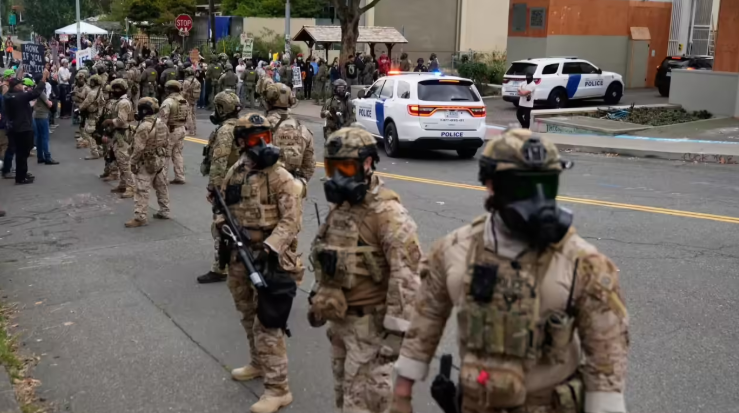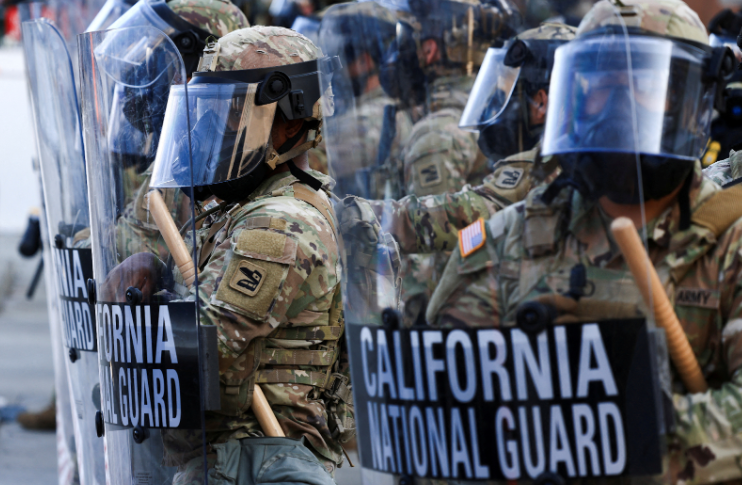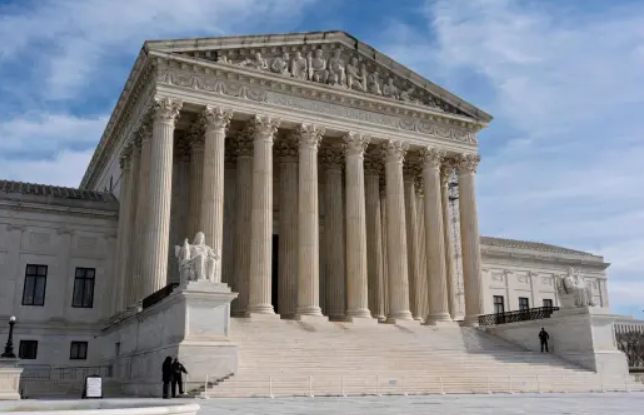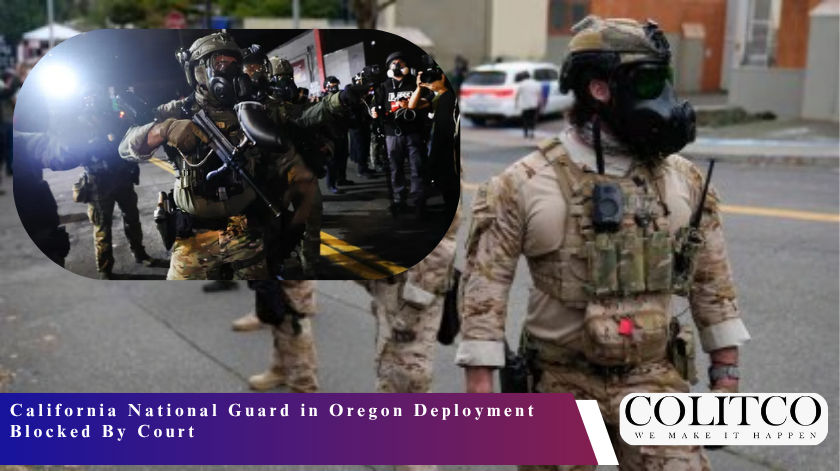In the face of a federal judge, the contentious deployment of the National Guard to Oregon has been stopped. Troops were sent at the President’s behest in response to protests. However, the court regarded the order as being unjustified and probably unconstitutional.
The decision has sharpened political and judicial battles concerning Trump’s use of the military domestically. Forgoing the appointed governors of both California and Oregon, they have vowed to challenge the move.
What Triggered this Legal Block?
The deployment was associated with protests in Portland outside a federal immigration office. Trump issued military orders in 2025, permitting some 200 guard members to work under federal duty. Around 100 had already arrived in Oregon before the intervention by the judge. The other 100 were on their way.
Judge Karin Immergut granted a temporary restraining order. There was no evidence found of violent unrest that would justify federal military presence in her ruling, which also expressed concern over breaches of state sovereignty.
The order will stand until October 19th, and the federal government has yet to announce if it will appeal.

Trump sent 200 Guards to Portland; the judge halted half’s arrival.
How Many Troops Were Involved?
The deployment of the Trump National Guard drew 200 California National Guardsmen, half of whom had made it into Portland before the ruling was announced. The Pentagon confirmed that they were reassigned from duties in Los Angeles.
According to the officials, the mission was meant to control crowds and protect infrastructure. Oregon’s political heads claimed that these forces were not ordered and that they were not even requisite.
The local police said the protests were peaceful and handled sufficiently. The Governor of California insisted that he had never consented to the federalisation and said that the White House simply went elementary and ignored elementary procedures.
Why did the Judge Block Trump’s Move?
Judge Immergut emphasised constitutional considerations. Normally, the deployment of the National Guard requires the consent of the state. However, the federal action is allowed only under certain conditions, which ordinarily relate to insurrection or an extraordinary level of disorder.
In her view, no such conditions existed in Oregon. The protests were mostly peaceful. In fact, the judge stated that Trump’s decision could be detrimental to state authority.
Her ruling cited his justification as being “unsupported and disproportionate.” Civil rights groups welcomed the ruling, arguing it protects state governance and the right to protest.

The judge stressed state consent; the federal Guard’s use needs exceptional conditions.
What is the Reaction From States and Officials?
Oregon’s governor stated that “there is no military intervention needed.” She also thanked the court for reaffirming state sovereignty. The governor of California criticised the deployment as well and labelled it “reckless and authoritarian.”
Both governors have pledged to issue a legal challenge in unison. They are of the opinion that Trump’s military directives of 2025 threaten the federal-state balance.
Democratic lawmakers repeated these accusations, claiming Trump is using the unrest for political exploitation. Republicans, in turn, have supported the move, asserting that the federal action was necessary to restore law and order.
Did Trump Act Under Trump’s Military Orders 2025?
Yes. Trump has therefore invoked his 2025 National Guard directives. They allow federalisation without gubernatorial approval under certain circumstances. He has used this authority in the past in Illinois and elsewhere.
The federal administration views such cities as Portland as “war zones.” President Trump claims that the presence of federal troops ensures safety and stability. Critics are calling it a dangerous new expansion of executive power.
The White House insists the order is within the president’s constitutional powers. The Pentagon has given very few details regarding the operational rules.
What is Next for this Standoff?
The temporary injunction is valid up to the middle of October. Oregon and California are loading up for the longer legal wrangling. The appeals could reach the Supreme Court if the White House opts to challenge the ruling.
Meanwhile, some 100 troops already in Portland remain in limbo. The troops’ legal statuses are uncertain, as commanders have been instructed to stand by pending court clarification.
For now, the deployment of the California National Guard in Oregon is halted. This dispute is a reflection of a broader division revolving around Trump’s use of military power.

Injunction lasts until mid-October; appeals may reach the Supreme Court.
Investor and Political Outlook
As one can imagine, the dispute has ramifications outside state borders. Markets are sensitive to political instability and legal disputes. Analysts warn that investor confidence could be threatened if the disorder worsens. Domestic deployment contracts may come under scrutiny from defence contractors.
The ruling thus tests Trump’s larger schema politically. Forceful intervention has been the mainstay of his appeal among his supporters. However, court rulings and even state resistance might end up limiting his reach.
Some observers propose that any further deployments may yet face more robust judicial resistance. Such legal precedent would then become a factor in the future reckoning for presidential authority.
Also Read: California Los Angeles Wildfires LIVE Updates: New Blaze Wreaks Havoc, Death Toll Rises to 10
FAQs
Q1: What does it mean to federalise the National Guard?
It means transferring guard units from state control to federal command.
Q2: Why did Trump use Oregon for deployment?
He gave protests outside a federal immigration facility as justification.
Q3: Could Trump have overridden the judge’s order?
Not directly. It could only be lifted by an appeals court.
Q4: Would the ruling affect the deployment of the National Guard under Trump?
It may. It may set a precedent restricting therefrom similar orders issued under his directions in 2025.












